2.6.U1 – The nucleic acids DNA and RNA are polymers of nucleotides
- Linear molecules that stores biological information in units known as nucleotides.
- 4 nucleotide base pairs make up the DNA “alphabet”
G – Guanine C – Cytosine A – Adenine T – Thymine
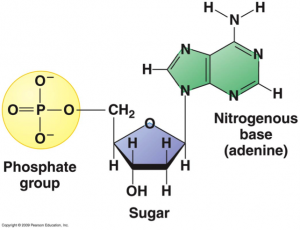
- This nucleotide code specifies which protein an organism will make.
- DNA molecule is a double strand of nucleotides carrying complimentary base pairs.
DNA Nucleotide – 3 components: a phosphate group (PO4), a pentose (5) sugar, and a nitrogenous base.
Each DNA Nucleotide = monomer, the DNA strand = polymer
2.6.U3 -DNA is a double helix made of two antiparallel strands of nucleotides linked by hydrogen bonding between base pairs
Antiparallel = Parallel but moving or oriented in opposite directions.
RULES FOR BASE PAIRING:
C with G: The pyramidine Cytosine always pairs with the purine Guanine
A with T: The pyramidine Thymine always pairs with the purine Adenine
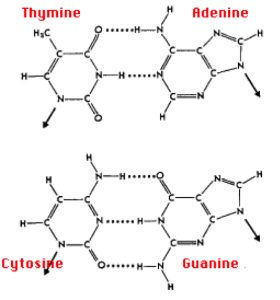
Question: Why can’t A pair with C and G with T?
Only with A & T and with C & G are there opportunities to establish hydrogen bonds based on molecular structure. (Two between A and T and three between C and G)
The rules of base pairing tell us that if we can “read” the sequence of nucleotides on one strand of DNA, we can immediately deduce the complementary sequence on the other strand.
|
Pyramidine: A pyrimidine is a heterocyclic organic compound – Two nitrogen atoms. – One carbon ring
|
Purine: A purine is a heterocyclic organic compound – Four nitrogen atoms. – Two carbon ring
|
|
|
|
- DNA is double stranded. Each strand is composed of nucleotides where the pentose sugar of one nucleotide is covalently bonded to the phosphate group of the next.
- The two strands are parallel, but are oriented in opposite directions. The stands are held together by hydrogen bonding between complimentary base pairs.
2.6.U2 – DNA differs from RNA in the number of strands present, the base composition and the type of pentose
| DNA | RNA |
| Sugar is deoxyribose (carbon 2 – no oxygen attached) | Sugar is ribose (carbon 2 has an –OH attached) |
| Nitrogenous bases are guanine, adenine, cytosine and thymine | Nitrogenous bases are guanine, adenine, cytosine and uracil |
| Double-stranded molecule | Single-stranded molecule |
Source: http://ibworld.me/Biochemistry.html#2.7_DNA_structure
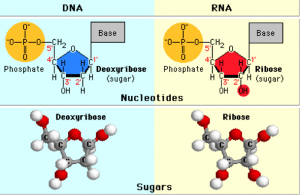
Ribose, found in RNA, is a “normal” sugar, with one oxygen atom attached to each carbon atom.
Deoxyribose, found in DNA, is a modified sugar, lacking one oxygen atom at the second carbon. This difference of one oxygen atom is important for the enzymes that recognize DNA and RNA, because it allows these two molecules to be easily distinguished inside organisms.
DNA Directionality – Understanding 5’ and 3’
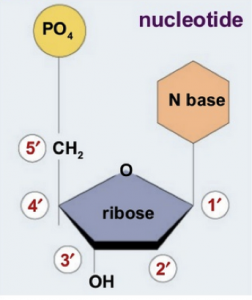
Numbering the carbons matter!
Since, the DNA stands are anti-parallel, we expect each strand to have a 5’ end opposite of each other. Likewise with the 3’ end.
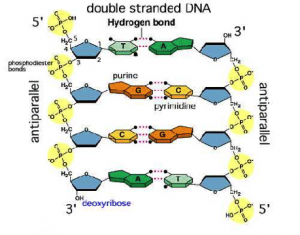

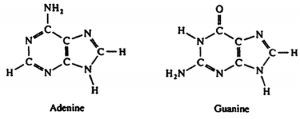
Comments by shaun pletsch